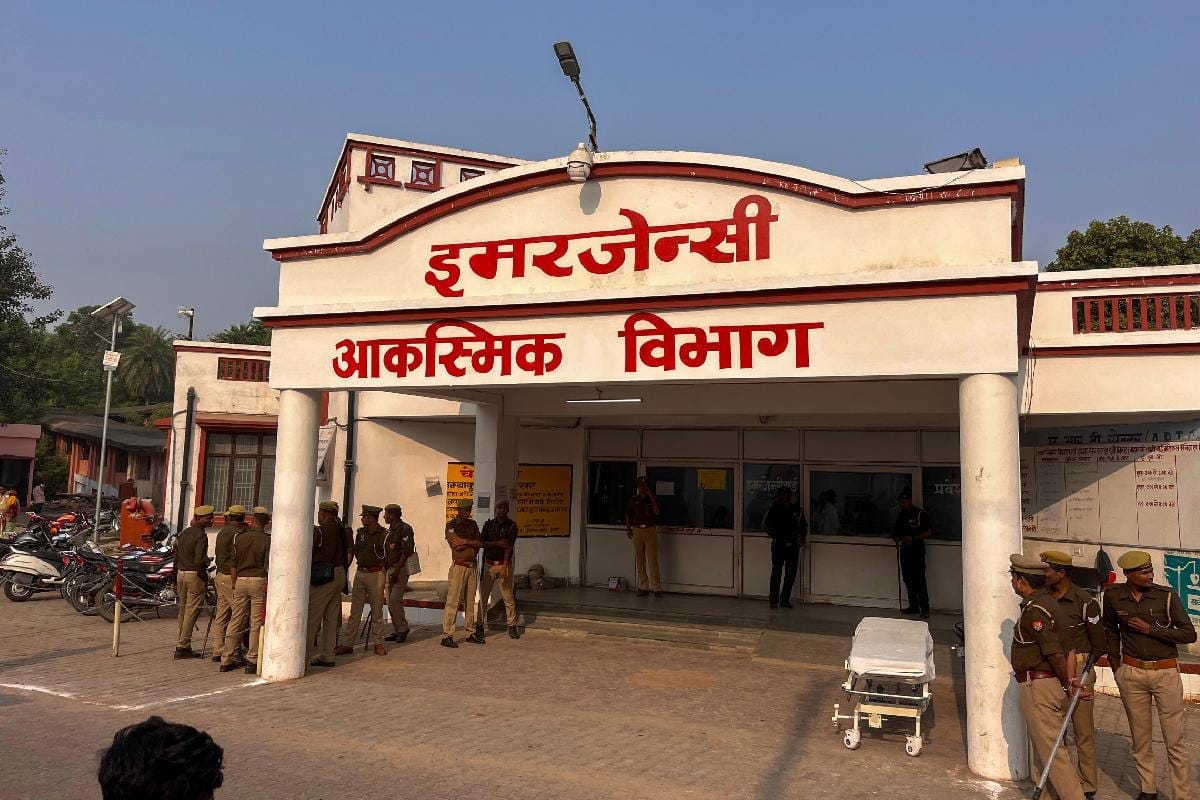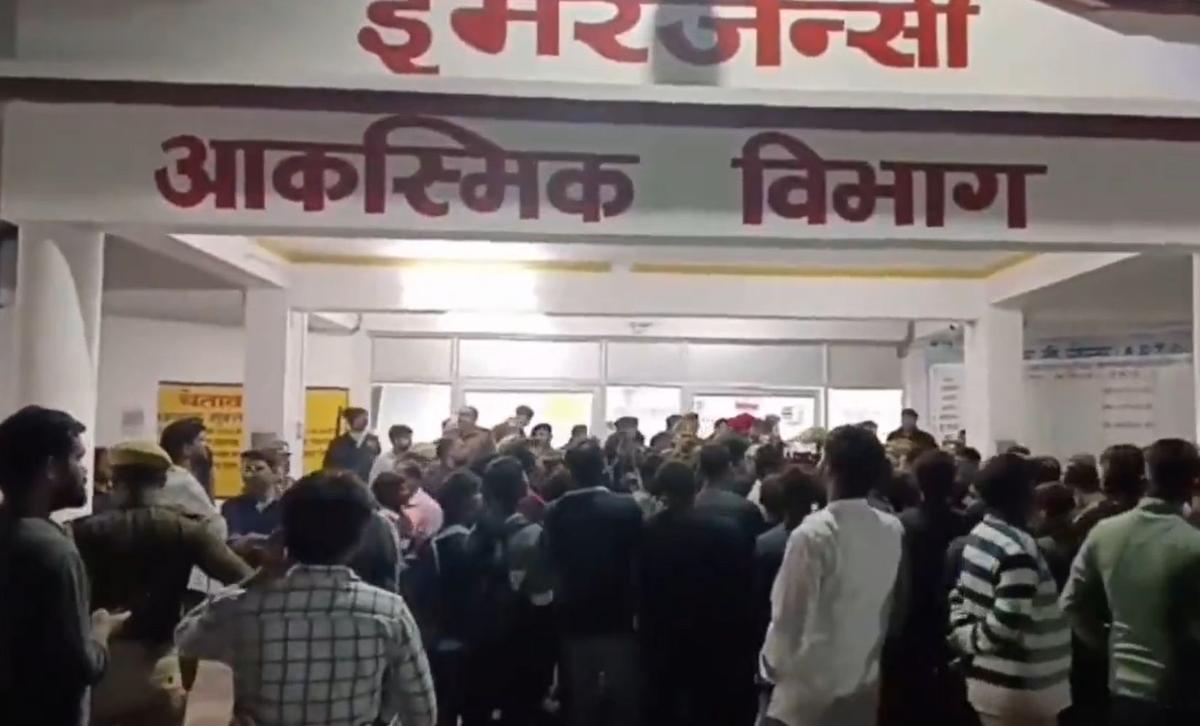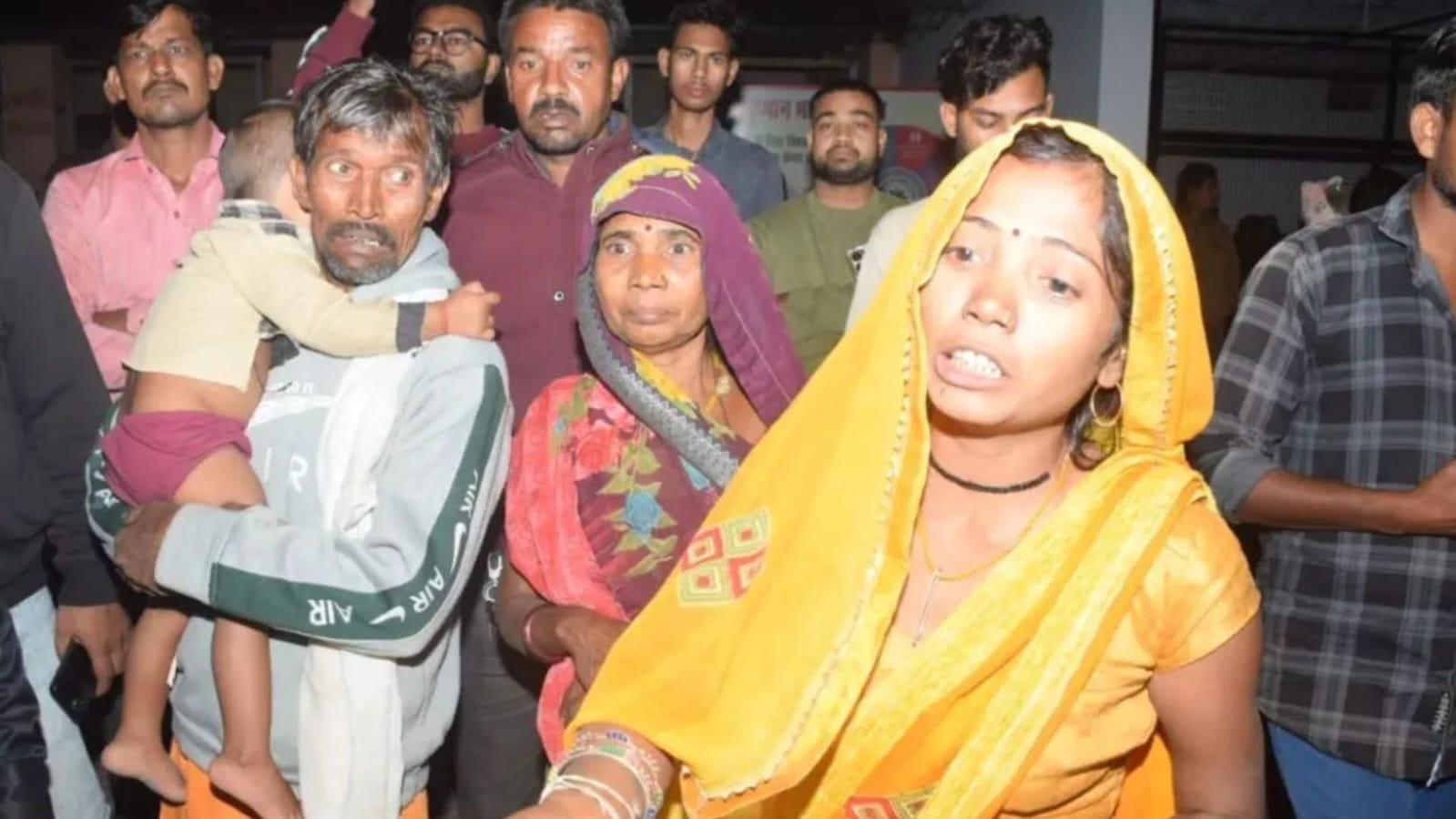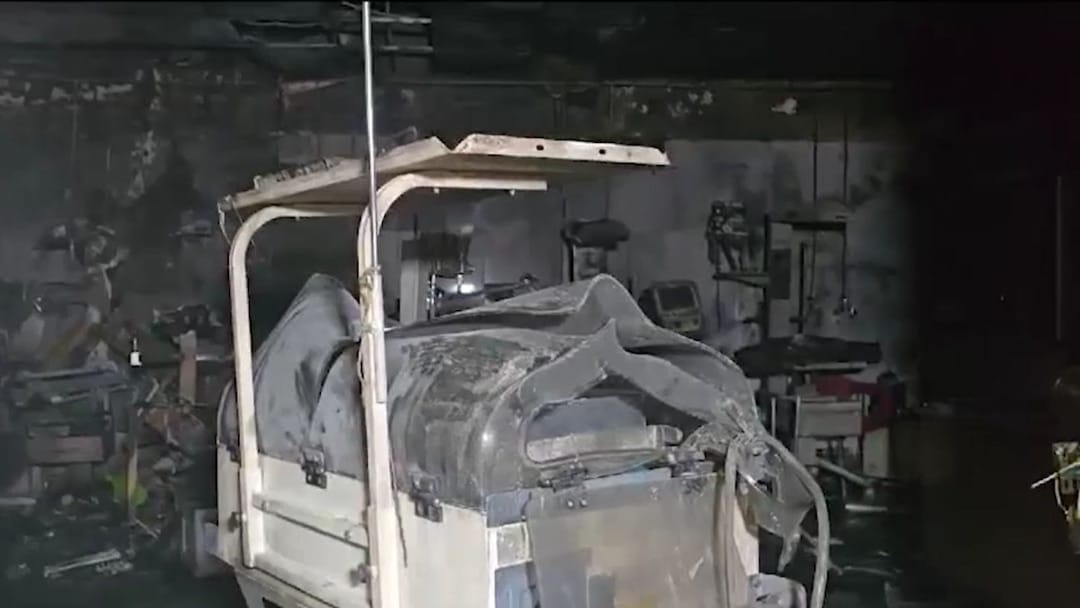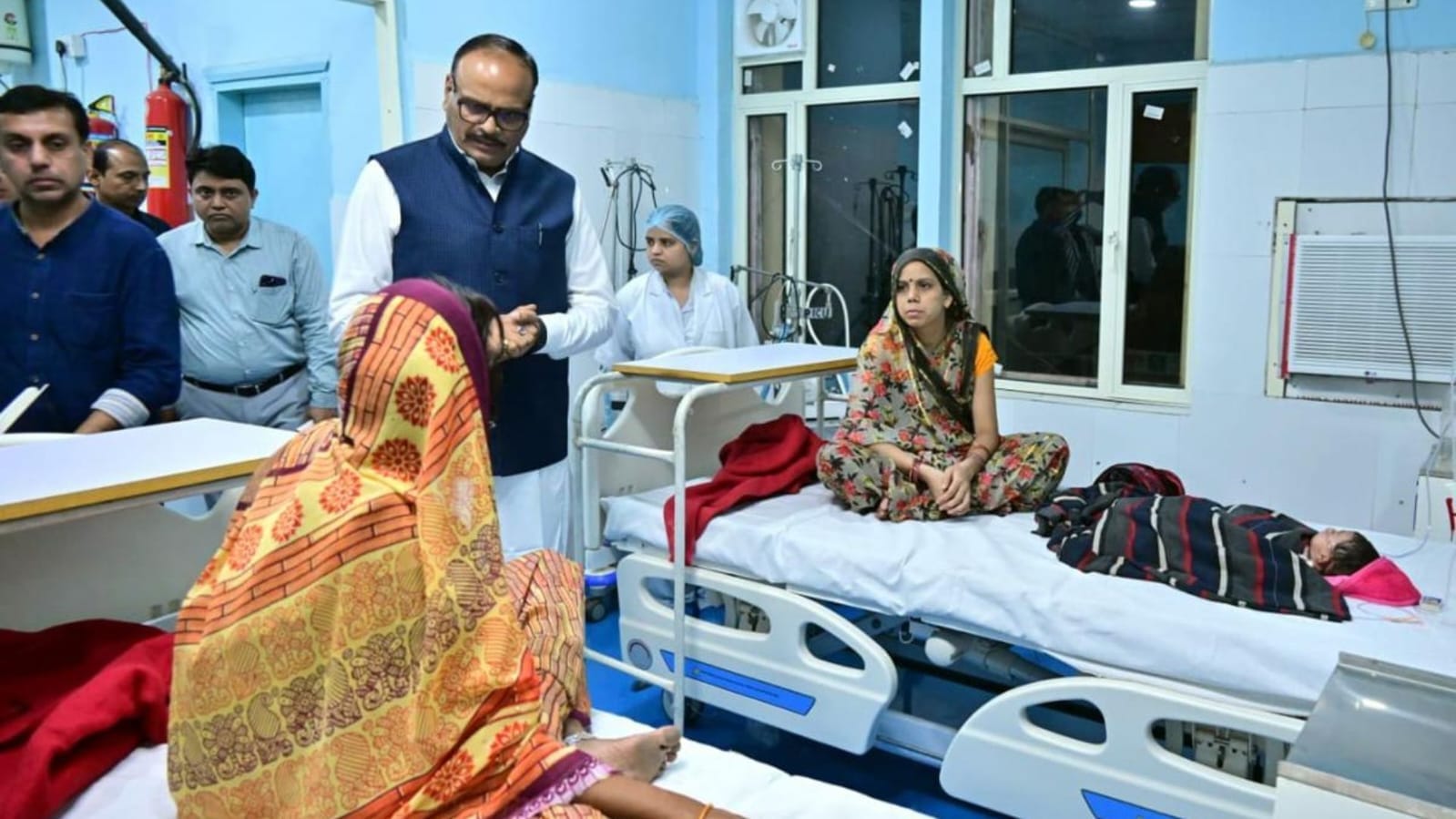On Friday, 15th November, a tragic fire broke out between 10.30 and 10.45 PM in the neonatal intense care unit (NICU) of Rani Laxmibai Medical College in Jhansi, Uttar Pradesh. The panic to contain the fire while rescuing babies from the NICU created a stampede-like situation at the hospital. Families, staff, and doctors rushed into the NICU, trying to save as many babies as they could. A fire brigade quickly arrived while the rescue operations were carried out.
Families, staff, and doctors rushed into the NICU, trying to save as many babies as they could. A fire brigade quickly arrived while the rescue operations were carried out.
Despite all efforts, out of 54 babies, 10 newborns succumbed to burns and suffocation the same night. 44 babies were rescued, but sadly two more infants have since died due to fatal injuries, and 14 babies are still being treated for their extremely critical health.
Chief Fire Officer Raj Kishore Rai stated, ‘The fire was caused by a short circuit in the oxygen concentrator, and what actually led to this is being probed at multiple levels.‘
What started as a small spark quickly engulfed the entire NICU due to the plastic-covered equipment and the presence of an ‘oxygen concentrator’.
Sachin Mahor, Chief Medical Superintendent commented, ‘Efforts to douse the fire were made, but since the room was highly oxygenated, the fire spread quickly.‘
The horrific fire may have been accidental and a rare occurrence, but it managed to reveal some systemic failures in the state’s public healthcare, it’s neglect, inadequate funding, and lack of accountability.
The overcrowded NICU
The NICU at Rani Laxmibai Medical College serves patients from multiple districts across Uttar Pradesh and Madhya Pradesh. The hospital is perpetually overcrowded, forcing staff to overcrowd a single incubator.
Dr. N.S. Sengar, principal of the medical college confirmed that the NICU was running way beyond its full capacity of 18. Acknowledging the overcrowding issue where two to three babies were being treated in one incubator, he added, ‘This is the condition in many hospitals across Uttar Pradesh and since incubators have ample space, this is how we manage the high influx of patients.‘
Running an intensive care unit at triple capacity directly compromises patient safety and quality of care, while also creating a difficult environment for the staff to function with these “adjustments”.
When looking at this emergency scenario, rescue operations were hampered due to overcrowding, putting more lives at risk in the NICU meant for just 18 babies.
Only the government can solve these issues through fair funding and resource allocation.
Public hospitals serve as a lifeline for poor families. Overcrowding takes away the safety and care all patients have a right to. Only the government can solve these issues through fair funding and resource allocation.
The emotional turmoil of the parents of children in the NICU
Imagine the chaos of new parents, desperately running to check on their newborn baby in the burning NICU. The staff battling the fire, people trying to rescue any baby they could amidst the thick black smoke, huge flames, and the charred hospital equipment in the unit.
Parents and families panicked in the chaos as they searched for their babies. One of the nurses suffered burns on her legs while dousing the fire.
Fortunately, the tags made it easier to identify the deceased children but three babies remain unidentified, leaving some parents confused about their child’s fate.
Rani Sen, an aunt of one of the babies, shared her confusion as they were asked to get their children. ‘If the tags were burned or misplaced, how can they say which child is mine? I found a baby who wasn’t mine and admitted him under my name,‘ she told news agency ANI.
‘The nurses were pushing people out, but those who managed to get in grabbed any child they could,’ a mournful grandmother told ANI.
‘My child has been killed in the fire,’ Santoshi, a grieving mother told reporters. ‘When the fire broke out, I couldn’t go inside to rescue my baby. How could I? When no one was able to get inside, how could anyone hand me my baby?‘ she said.
‘I could not reach the section where my daughters were admitted because the fire was so intense. Other parents tried too, but we all failed,‘ shared Yakoob Mansuri, a young father of two.
As most of the families coming to the medical college for treatment can’t afford private healthcare, the financial burden of this incident adds to the emotional strain of this traumatising fire.
‘Expired fire extinguishers‘ and ‘defective alarm systems‘
Eyewitnesses have confirmed that the extinguishers at the scene were “ineffective” to douse the fire. Some reports claim that the extinguishers had expired in 2022 as per their labels, making them purposeless in this emergency. They stated that if the extinguishers were functional, more babies’ lives could have possibly been saved.
Additionally, the fire safety alarms did not go off, delaying the rescue operations. There was no emergency preparedness despite recent fire drills.
However, UP Deputy CM Brajesh Pathak denied the claims of expired and faulty equipment. ‘All the firefighting equipment in the medical college was completely fine. A fire safety audit was conducted here in February and a mock drill was also conducted in June,‘ Pathak stated.
This conflicting narrative raises serious questions about accountability and transparency in the hospital’s safety protocols.
Structural and oversight issues in administration exposed by the UP NICU fire
While an extension for the overloaded NICU was under construction at the college, it was still incomplete, leaving the hospital ill-equipped to handle so many babies.
‘The current NICU has been functional for over 12 years and our patient footfall has increased significantly. We managed funds from various sources and started building the extension unit. Some money came from the government, from the local administration, and we also arranged some through CSR,’ commented Dr N.S. Sengar, principal of the medical college.
To manage the overcrowding, the hospital started using a Pediatric Intensive Care Unit (PICU) which was not officially inaugurated yet. Why was the ad hoc nature of resource management so openly practised and not taken care of?
Why was the ad hoc nature of resource management so openly practised and not taken care of?
The state government is directly responsible for appointing competent administration to ensure oversight of public hospitals. It should have ensured that public hospitals are adequately expanded, modernised and accessible to meet rising demands.
NHRC looking for accountability
Highlighting the gravity of this alarming situation, the National Human Rights Commission (NHRC) has sent a notice to the UP government and the state’s police chief.
Especially when the fire was in a state-run facility, the NHRC’s statement emphasised the fire tragedy was ‘indeed disturbing and indicates negligence‘ resulting in a ‘grave violation‘ of the human rights of the victims.
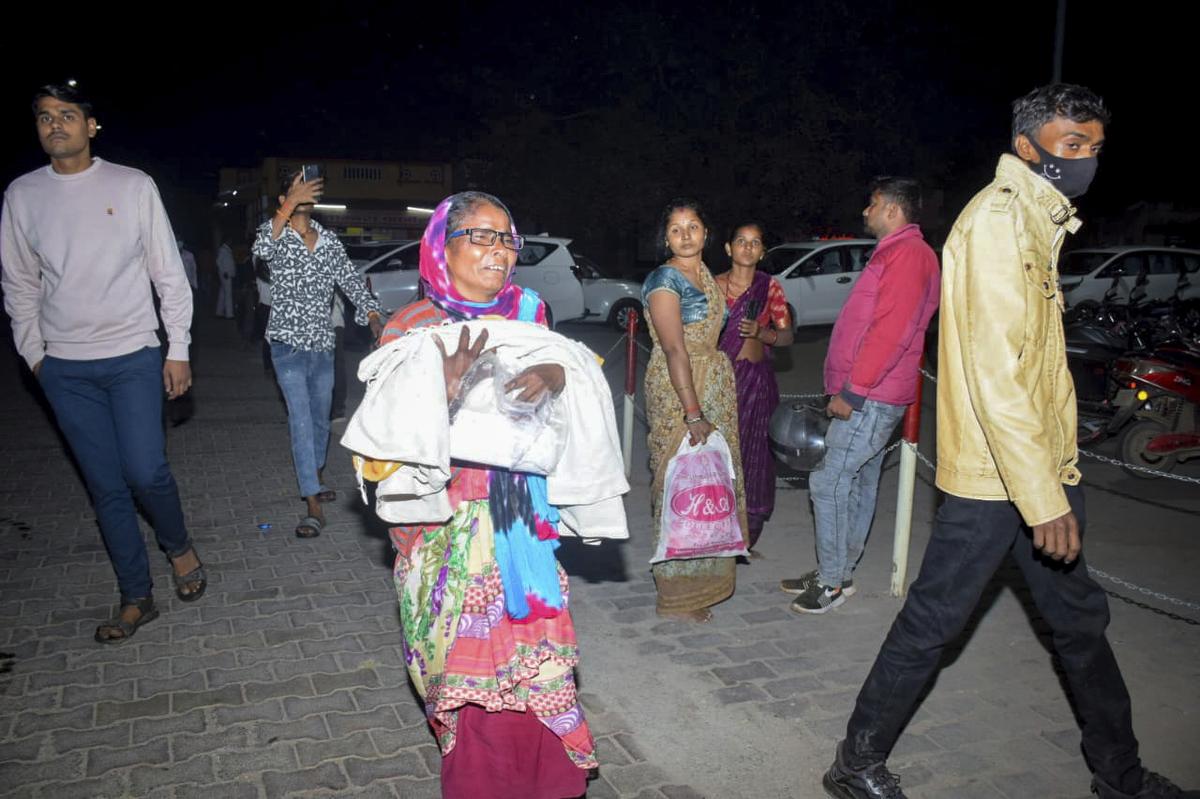
The NHRC has asked for full transparency about all information about the case, from the FIR status, medical aid, and financial aid offered to the victims, to the steps taken to avoid such incidents in the future.
The notice has been taken seriously under the chairmanship of Kinjal Singh, the Director General of Medical Education. A four-member investigation committee has been formed for a detailed investigation, that has been asked to submit a report in seven days.
The government steps up, too little too late?
PM Narendra Modi offered his heartfelt condolences, promising financial aid to the grieving families from PMNRF: ₹5 lakh for the families of the deceased and ₹50,000 for the injured.
Uttar Pradesh CM Yogi Adityanath has also announced compensation for the victims from the Chief Minister’s Relief Fund: ₹5 lakh for the deceased newborns’ families and ₹50,000 for the families of the injured babies.
President Murmu too shared her sorrow, offering sympathy to the parents and families who suffered losses in this incident.
Is this compensation sufficient to address the adverse trauma the families went through? Is it enough to hide the healthcare’s systemic failures the tragic fire exposed? The government surely owes more than condolences and compensation to its citizens.
Systemic failures in public healthcare
Non-compliance with the protocols in case of emergency, despite safety drills and audits, is sadly common and not taken seriously. A system of regular inspections must be created where non-compliance means a penalty with more involvement from the National Medical Commission.
The overcrowding, lack and mismanagement of resources, lax safety standards, and lack of accountability are some of the major issues plaguing the system. Only when the authorities understand the magnitude of these issues, will real change come into play.
The Jhansi NICU fire is not an isolated incident. A similar fire broke out in Delhi’s Vivek Vihar NICU in the last 6 months, killing 7 newborns. Does this highlight a healthcare system that prioritises survival over safety, “jugaad” over planning and resource allocation? A system that believes in reaction over prevention?
The tragedy demands urgent collaborative reforms with strong systemic accountability. The lives of its most vulnerable citizens, the newborns, deserved better. While the immediate issues lie with the state government’s mismanagement, the central government’s role in policy-making and funding can’t be ignored here. Both must work together to safeguard India and its public health.
About the author(s)
Forget textbooks, Mrudavi got hooked on writing through her childhood obsession with fiction novels. Now, she tells engaging stories that address real-world topics with a touch of her experiences. When the writing bug takes a break, Mrudavi can be found curled up with a good book or with her favourite people, fueling her imagination with endless cups of iced lattes.
